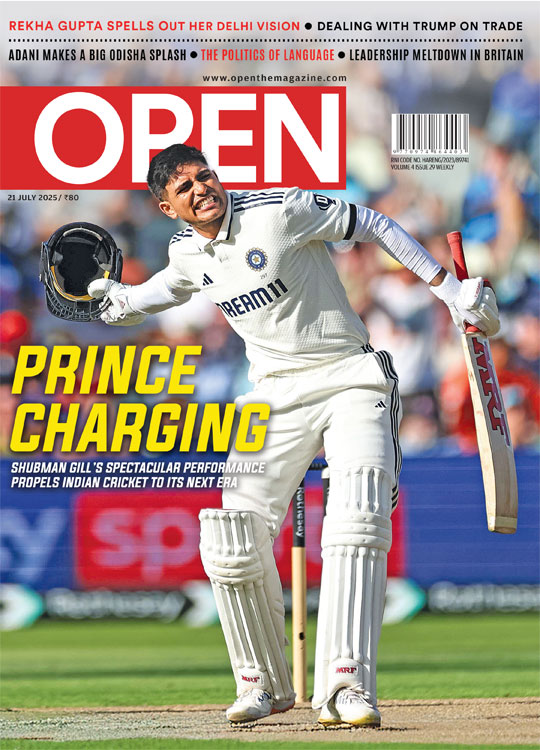Measuring the Indian Penis
The findings of a bold research study
 Lhendup G Bhutia
Lhendup G Bhutia
 Lhendup G Bhutia
Lhendup G Bhutia
 |
22 Nov, 2012
|
22 Nov, 2012
/wp-content/uploads/2015/11/penis-2.jpg)
The findings of a bold research study
A well-known British scientist, Richard Lynn, recently published a study that lists and compares the average erect penis lengths of men in 113 countries. His findings, which appeared in the journal Personality and Individual Differences, range from the large sizes of the Congolese (which at an average 7.1 inches rank No 1) to the lengths of South and North Koreans, which average a little more than half that figure (at 3.8 inches, the smallest). Indians were part of the study too, but, with an average of just 4 inches, rank just above Koreans and Cambodians (3.9 inches), sharing the 110th spot with Thais (also 4 inches).
The source of Lynn’s data on Indian penis lengths is a little-known study called ‘Study on proper length and breadth specification for condoms based on anthropometric measurement’, which began with grand ambitions more than a decade ago and then slid into obscurity.
In the year 2000, Dr RS Sharma, head of the Reproductive Health and Nutrition division at the Indian Council of Medical Research (ICMR), heard of a study that the Union Ministry of Health wanted undertaken. Prompted by frequent reports of condom slippage in India, the Ministry was keen to know if this phenomenon could be traced to a discrepancy between Indian penis and condom sizes. It was a question that had rankled Dr Sharma earlier too. Condoms in India were made to global size specifications, and no proper study had ever been done on Indian sizes. Offered a chance by the then ICMR Director General NK Ganguly, Dr Sharma agreed to lead this research project.
Over the next few years, he and his team would have to go about the country asking men to unzip their trousers and offer their penises at their stiffest for measurement. When he started the study in 2001, Dr Sharma knew it would not be easy to accomplish the task in a hurry. But he did not expect it to take five years. “The average Indian penis is like no other,” says Dr Sharma, “Here, people from various ethnicities and physiques have to be accounted for.” The doctor decided to draft a task force of urologists and gynaecologists across the country. Many refused to be part of a study with such an “audacious subject”, but eventually he got a team ready to report sizes from seven centres—Patna, Guwahati, Cuttack, Chandigarh, Delhi, Mumbai and Hubli. Each would send at least 200 samples, and from this data, Dr Sharma would attempt to answer the truth about the size of the Indian penis.
Armed with the foresight that getting the consent of participants to have their erections measured would be difficult, Dr Sharma sought the help of Dr Sujoy Kumar Guha, a well-known biomedical engineer at IIT Kharagpur, who among other things has helped develop an injectable male contraceptive (although it is yet to get government approval). “It was an interesting subject [whether Indian penises were too small for condoms], one that many people believed could be true. It was crucial that participants not be inhibited in having themselves measured,” Guha says in a telephone interview. To ease the process, he developed a digital camera for a man to take a picture of his erect penis under conditions of minimal light. With a special algorithm developed to process the data captured by the camera, it was thus possible to arrive at the size of the penis in question. The camera trials were a success, but the method was too expensive. According to Guha, the camera’s development cost over Rs 2 lakh, and the ICMR did not have a budget large enough to make one for every centre. Instead, a kit that relied on measurement tape was put to use.
In Mumbai, the study was conducted by Dr RR Shinde, head of KEM (King Edward Memorial) Hospital’s Department of Preventive and Social Medicine, along with four other individuals. They began work in 2004, and while they had a promising start, it still took as long as two years to complete. Finding participants was the key challenge. KEM’s 30-year-old health centre at Malad proved to be a good location to get volunteers. “Youths living close to the centre, either because they knew the centre for so many years or for some other reason, readily agreed,” he recalls.
Each participant was paid a nominal sum (a figure the researchers do not disclose) as travel compensation. “They seemed very excited by the idea,” says Dr Shinde, of the centre’s early days, “They would just go into a room, work up an erection and call for measurements to be taken.” To facilitate the task for participants, Dr Shinde had at the centre a stack of magazines that could offer them visual stimulation. He also encouraged participants who were married to get their partners along.
“It was going so smoothly, and then we hit a [bad] patch.” Of the few thousand approached, very few agreed to participate. Many who had agreed at first failed to show up. “We had been discretionary at first,” Dr Shinde says. “At the centre, [when] we had a bit of luck going, we approached only those with whom we had built a rapport over time. But later, when we couldn’t find enough participants, all discretion was thrown to the wind.” Dr Shinde and his team started scrounging around in the hospital, asking relatives of patients and other visitors to sign up for the study. “We would take the male relatives of patients aside and just blurt out what the study was about and its objectives,” he says.
In Chandigarh, the data target was met much faster. Dr SK Singh, a urologist at the city’s Postgraduate Institute of Medical Education and Research, managed to secure the measurements of around 220 participants within just six months. But he claims to have hardly slept a wink in that period without having dreams of the study. “Every patient or individual I met in that period was a possible participant,” says the affable 55-year-old doctor. He would broach the subject in the gentlest fashion, he says, and only after building a rapport. He would throw in the bait of a free check-up, and if even this did not work, he would appeal to them as good citizens. “Do this for your country,” he would say.
The kit developed for the study had two paper strips. One would be wound around the penis to mark and measure its width, and the other, its length. Of each penis, three erections were to be measured, and the average noted as the final measurement. However, many volunteers were either unwilling to have someone hold and measure their erections, or if they did agree, they would turn flaccid at the slightest touch or glance. To counter these problems, Dr Sharma decided to train them in using the kit to measure their own organs. However, of the three measurements, at least one would be conducted by the investigator. These markings would be taken twice at the investigator’s clinic, and once in the privacy of their homes, where, it was believed, they would be most comfortable and able to attain their finest erections.
“It was an extremely challenging study,” Dr Singh says, “You had to coax someone to become a participant. And when they agreed, they would just not be able to get it up. It was like not being able to perform. They would seem so defeated. And I would always tell them, ‘It’s okay, it happens with everyone. Give it a shot later.’”
While some centres sought to aid participants with glossy magazines, even asking them to get their partners along, others like Dr Singh worked on the assumption that just a few kind words of encouragement were enough. To overcome momentary erectile failure, Dr Shinde would advise participants to lie low for a while, as he puts it. “I would tell them to give it some rest and refrain from any sexual activity for some time. I would say, ‘When you get a good strong urge, just stimulate yourself a little at home, and rush here. But remember, just a little stimulation.’”
The research study took a lot of effort. Yet, once it was completed and submitted to the Ministry in 2006, nothing came of it. No guidelines were issued for condom makers, nor were the findings published in any journal. This is still the case. Dr Sharma is hesitant to talk about it, but according to Dr Shinde, the Government is not moving on the report for mysterious reasons.
Dr Sharma and the other researchers refuse to share their findings with me, but Dr Shinde does. According to the Mumbai doctor, of the 200 samples measured in the city, most penis sizes ranged between 4.5 and 4.9 inches in length and around 4.3 inches in circumference. Strictly speaking, the sample was not ‘random’—with an equal probability of every adult male’s inclusion—but the figures are clearly indicative if not perfectly representative.
Most condoms available in India measure a minimum of 6.7 inches in length, unrolled. Schedule ‘R’ of India’s Drug & Cosmetic Act, 1940, stipulates this requirement. However, according to N Balasubramanian, general manager, TTK-LIG Ltd, a company that until recently made and marketed Durex and Kohinoor condoms in India and has just launched a brand called Skore, a penis that is shorter than a condom is no matter of concern. “I am not aware of such a study,” he says, “But even if a penis were to be shorter than the condom, this is unlikely to lead to a condom slipping off.” After all, a condom need not be unrolled any larger length than needed.
The Indian penis has also been the focal point of another study. This one, although much smaller in scale, was published in the journal International Journal of Impotence Research and was based on a field study done in 2007. Here, 301 individuals from Kochi participated in a study conducted by Dr K Promodu, who runs a sexual dysfunction clinic, along with three other researchers.
Dr Promodu’s objectives were not the same as the ICMR’s. The doctor, faced with innumerable queries on penis sizes on a local TV show for which he ran a Q&A session on sexual health, wanted to know if size statistics had any connection with the complaints he heard.
The researchers’ difficulties, though, were no different. They procured, on the consent of participants, the records of 500 randomly selected patients at the clinic and also the outpatient clinic of the urology department at Calicut Medical College. After excluding those who had genital abnormalities, they whittled the list down to 301 subjects. They were able to glean data on the width, length and stretched lengths of flaccid penises from these medical records. But when they sought to measure their erections, only 119 agreed, and most wanted to measure themselves. Even in this group, the data of 26 subjects was discarded—for their inability to achieve an erection, loss of one at the time of measurement, or a wide discrepancy between two different readings.
However, in contrast to the ICMR and Lynn’s report, Dr Promodu’s study found that the average Indian erection measures 5.08 inches in length and 4.5 inches in circumference. He does concede, though, that his sample size was too small and concentrated (in Kerala) to be representative of the entire country.
Regardless of accuracy, Lynn’s research offers a fascinating theory on why there are such vast differences in penis sizes. According to him, a long penis bestowed an evolutionary advantage on early man. Given the intense competition back then among men to impregnate women and pass on one’s genes, longer penises could displace the semen left by other males in the female reproductive tract. Over generations, this genetic selection favoured longer penises.
However, once the species migrated from equatorial Africa to Europe, Asia and north Africa, where the environment was colder and food scarcer, inter-male competition lessened. Men now had to cooperate in group hunting to secure food, and women grew relatively dependent on men for sustenance. Reduced competition for women led to a reduction of testosterone, thus causing a gradual reduction in penis size.
According to Lynn’s study, Negroids, whose average penis length is 6.3 inches, trace their lineage to those groups that continued to live in equatorial sub-Saharan Africa, while Caucasoids (5.4 inches) and Mongoloids (4.7 inches) are the descendents of those who migrated to North Africa, Europe and Asia.
About The Author
CURRENT ISSUE
MOst Popular
3

/wp-content/uploads/2025/07/Cover-Shubman-Gill-1.jpg)











More Columns
Why India's Rich And Famous Choose To Settle Abroad Short Post
‘Fuel to Air India plane was cut off before crash’ Open
Shubhanshu Shukla Return Date Set For July 14 Open